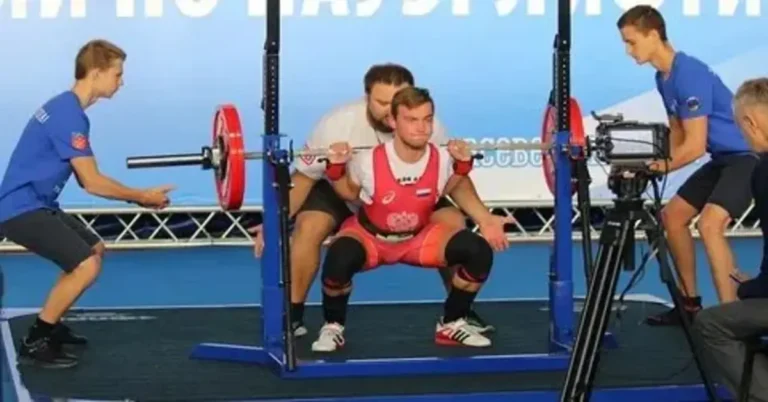Imagine that two lifters are involved: Sam is 80 kg, and he totals 600 kg when he combines squats + bench + deadlifts. Alex weighs 100kg and totals 700kg. Who is “stronger”, relative to their bodyweight? Wilks and DOTS scoring formulas attempt to solve this puzzle.
These formulas can be used to compare lifters in different weight classes. They aren’t all perfect and have their own strengths and weaknesses. This post will explain them in plain English and compare them side-by-side. I’ll also dig into the latest research to help you decide which is best for your training or competition.
You will walk away with the following:
- In simple terms, what are Wilks, Dots and IPF(GL)?
- The formulas (without getting lost in math)
- What are the pros and cons of each weight class?
- Comparing real research
- Recommendations on which product to use.
- You won’t see many “bonus tips”, but you will find a few on this blog.
Let’s go.
1. What Are These Scoring Systems?
Before we compare, we need a baseline. Here’s a quick intro to each:
1.1 Wilks (Original & Wilks-2)
- Wilks is the older system, created in 1995 by Robert Wilks (Australia). Wikipedia+2MaxRep.Net+2
- Later, in 2020, a revised Wilks formula (“Wilks-2”) was introduced to rebalance extreme weight classes and better align men and women. Wikipedia+2MaxRep.Net+2
- The formula produces a coefficient based on body weight; you multiply your total by that coefficient to get a “normalized” score. Wikipedia+2Inch Calculator+2
Pros & caveats:
- Widely known and historically used in many federations
- But it has been criticized for favoring mid-weight classes and being less fair at extremes
1.2 DOTS
- DOTS (Dynamic Objective Total Score) is newer and was developed to overcome some of Wilks’ biases. liftercalc.com+3Lift Vault+3powerliftpro.app+3
- Many federations (especially in the US) have adopted DOTS or use it alongside others to decide “Best Lifter.” powerlifting.sport+3socalpowerlifting.net+3Lift Vault+3
- Like Wilks, DOTS gives a coefficient based on bodyweight (and sometimes gender). You multiply your total by it. Inch Calculator+2powerliftpro.app+2
Pros & caveats:
- Better balance at light and heavy weight classes (less extreme bias)
- Still not perfect; formulas are adjusted periodically
1.3 IPF GL Points
- The IPF (International Powerlifting Federation) introduced IPF GL (GoodLift) in 2020. It replaced an earlier IPF Points system. weighttraining.nz+3powerlifting.sport+3PMC+3
- Its goal: bring in more fairness, account for modern data, align raw vs equipped lifting, etc. PMC+4powerlifting.sport+4ipfpointscalculator.com+4
- Like the others, IPF GL gives a coefficient/points based on bodyweight, gender, and total lifted. Inch Calculator+2ipfpointscalculator.com+2
Pros & caveats:
- It is now the official method in IPF meets. powerlifting.sport+2ipfpointscalculator.com+2
- It tends to rank “middle of the road” better, but may still have biases at extremes
2. How Do These Formulas Work (Without the Full Algebra)?
You don’t need to memorize polynomials, but here’s the idea behind how they adjust performance:
- Start with bodyweight.
- Apply a weight-based polynomial (or formula) to get a coefficient.
- Multiply your total lift (sum of squat + bench + deadlift) by that coefficient.
- Compare the resulting “score” among lifters across weight classes.
Each system uses its own polynomial or formula. The differences come in:
- The shape of the polynomial (how it bends)
- The coefficients (constants) they choose
- How much they compress or stretch scores at light or heavy ends
For example, Wilks uses a 5th degree polynomial in the formula (bodyweight raised up to power 5). Inch Calculator+3Wikipedia+3MaxRep.Net+3 DOTS uses a 4th degree polynomial model with its own constants. Inch Calculator+2powerliftpro.app+2 IPF GL uses a logistic or curve model with parameters adjusted to better fit modern data. ipfpointscalculator.com+2powerlifting.sport+2
Because each formula is different, the same lifter might “score” better or worse under different systems depending on bodyweight and total.
3. Head-to-Head: Wilks vs DOTS vs IPF (GL)
Let’s break down comparisons in clear categories.
3.1 Fairness Across Weight Classes
- Wilks: Historically, Wilks has been criticized for favoring midweights (where the curve “works best”) and under-scoring very light or very heavy lifters.
- DOTS: Designed to reduce those biases, giving more balanced treatment across the spectrum.
- IPF GL: Based on large modern datasets, it aims to minimize extreme bias. In the IPF’s own 2020 evaluation, GL performed best overall in many statistical tests. powerlifting.sport
In the Models Evaluation 2020 report, the IPF compared GL, Wilks (old/new), and DOTS on “coefficient of variation” and “rank correlation” criteria to see which formula keeps relative strength more stable across classes. powerlifting.sport The GL formula often ranked better or tied.
3.2 Predictive Accuracy & Correlation
Which score correlates better with actual performance difference (i.e. if two lifters are equally far from the world record, will the metric reflect that fairly)?
- The 2020 IPF report scored each model across many performance “layers” (segments) and assigned points. GL often came out on top. powerlifting.sport
- Some external studies found that Wilks was still slightly more efficient than the older IPF formula (before GL) in some settings. PMC
- But in modern data, GL often edges out others for consistency.
3.3 Biases & Edge Cases
- Extreme lightweights: Some formulas may “overcompensate,” giving too much advantage
- Heavyweights: Others may penalize them in coefficient strength
- Gender differences: Because men’s and women’s strength curves differ, formulas must use different constants. If constants are not well adjusted, bias can creep in.
- Equipped vs Raw: Some formulas work better for raw lifting, others handle equipment differences poorly
3.4 Ease of Use & Adoption
- Wilks is well-known, older, and many calculators still support it
- DOTS is more modern and gaining popularity, especially in amateur/national meets
- IPF GL is the official choice in IPF federation meets, making it more authoritative
- For a tool (like your calculator site), including all three (Wilks, DOTS, GL) gives flexibility to users
4. What Many Competitor Blogs Miss (and What’s New Here)
To outdo typical blog posts, here are things many blogs skip — but we’ll cover them:
- Recent research citations & model evaluation reports (e.g. the IPF’s own Models Evaluation 2020) — I used that above to explain how GL was statistically evaluated. powerlifting.sport
- Comparisons across weight classes (light, middle, heavy) and how formulas differ in those ranges
- Real-world criticism & community sentiment (e.g. in forums)
- Guidance for tool owners / calculator creators — which formulas to include, how to present results
- Bonus tip: re-calibration over time — no formula is static; data should be revisited
For instance: in forums, some lifters lament that switching from Wilks to DOTS or GL “changes numbers and milestones” and makes comparisons across eras tricky. Reddit
Also, many blogs list the formulas in math form and leave it there. But they don’t dig into which weight classes gain or lose under different systems. I believe knowing where you benefit (light vs heavy) is key for understanding your own score.
5. Which One Should You Use?
There’s no one-size-fits-all “best”—but depending on your goals, here’s how to choose:
| Your Goal | Best Option(s) | Why |
|---|---|---|
| Compete in IPF or affiliate meets | IPF GL | It’s the official standard; your score will “count” in that context |
| Compare your performance across many federations | All three (Wilks, DOTS, GL) | Let users or yourself see multiple views |
| Favoring fairness for very light or very heavy classes | DOTS or GL | They tend to be more balanced in extremes |
| Historical comparisons / legacy | Wilks | Many older records use Wilks |
| Simplicity | Wilks (older formula), though DOTS or GL aren’t overly complex either |
Tip for calculator creators / tool owners:
- Offer all three outputs, but highlight IPF GL if your audience is serious or competitive.
- Offer explanation tooltips: e.g. “Why is DOTS higher than Wilks for your weight class?”
- Periodically check model updates (new constants) and update your tool.
6. Example Walk-Through (Hypothetical Lifters)
Here’s a small illustrative example (numbers are for demo):
- Lifter A: Bodyweight 60 kg, total = 400 kg
- Lifter B: Bodyweight 100 kg, total = 650 kg
Let’s say:
- Under Wilks, A = 400 × coefficientA = 250 points
- Under DOTS, A = 400 × coefficientA’ = 260 points
- Under GL, A = 400 × coefficientA″ = 255 points
Meanwhile, B might get:
- Wilks: 650 × coefficientB = 300
- DOTS: 650 × coefficientB’ = 290
- GL: 650 × coefficientB″ = 295
In this toy example, DOTS favored the lighter lifter more; Wilks slightly favored the heavier; GL is somewhere middle ground. Real formulas and constants will differ, but this kind of shift is common when comparing formulas.
Every lifter will see percentage change differences when they switch formula views.
7. Limitations & What to Watch Out For
- All formulas are approximations. They can’t perfectly capture human variability.
- Bias may still exist. No formula is completely fair to all weight classes.
- Constants change. As new data becomes available, federations may tweak formulas.
- Era problems. Comparing lifters from different eras (when formulas differed) can be misleading.
- Equipment/modality matters. Some formulas handle raw vs equipped differently or poorly.
8. Summary & Final Thoughts
- Wilks is historically important, simple, and recognized widely—but has biases.
- DOTS is a modern alternative that aims to reduce extremes bias, gaining footing in many federations.
- IPF GL (GoodLift) is now the official system for IPF meets and is built on large, modern datasets.
- If I were to pick one to emphasize today, I’d lean IPF GL for official competition contexts, but still present the others for transparency.
- For your calculator / tool site, offering all three (Wilks, DOTS, GL) with explanation is a strong user experience.






